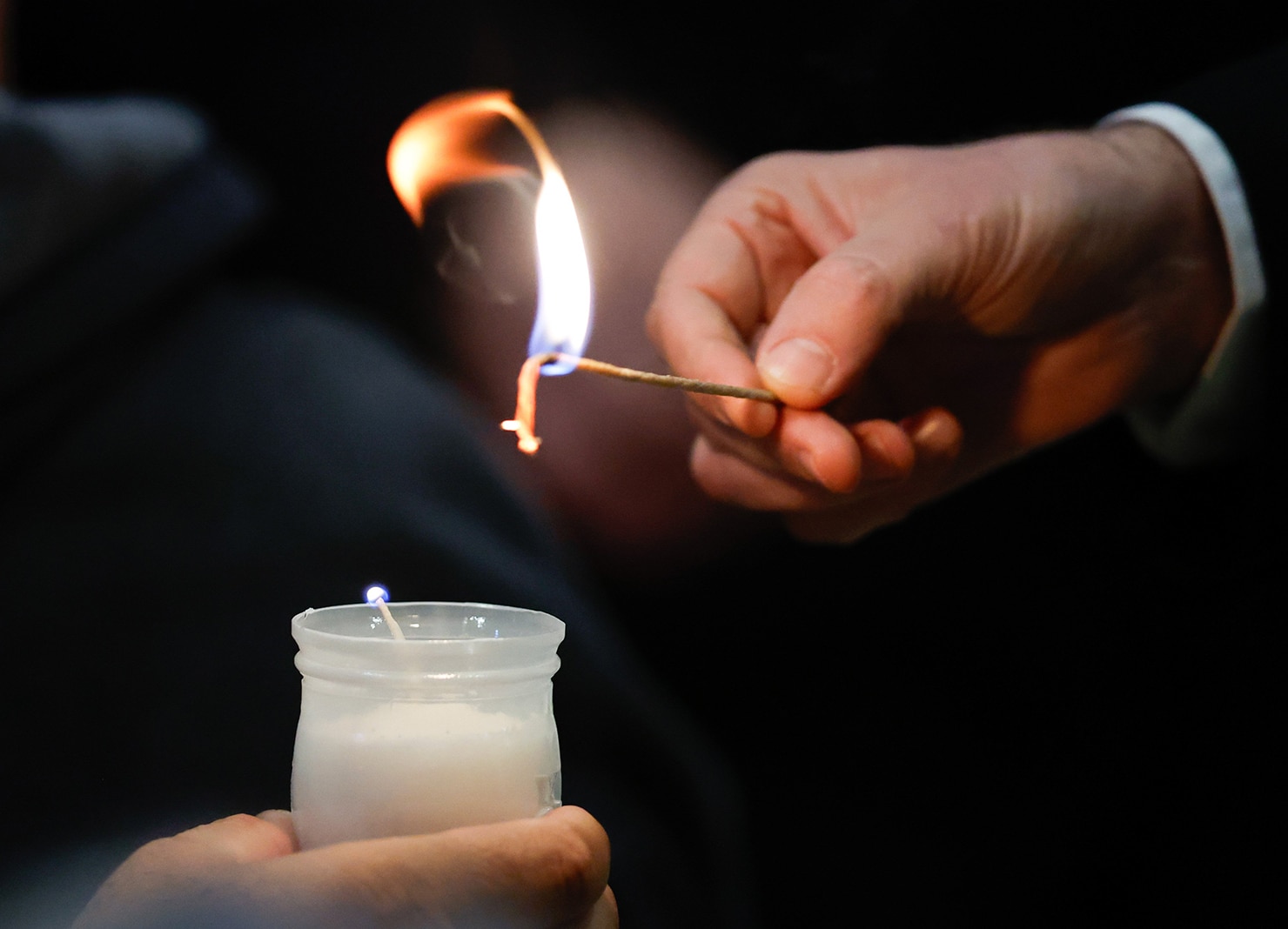When I mention to priests and religious that I am reading one spiritual classic a month this year, I often immediately get the advice not to read “The Dark Night of the Soul” by St. John of the Cross. I have obligingly avoided that intimidating work, but when one Carmelite encouraged me to add St. John’s “The Living Flame of Love” to my list, I was intrigued and took it up for the month of April.
“The Living Flame of Love” is a poem written by the 16th-century Spanish mystic with beautiful, fiery imagery to describe a soul’s perfect union with God. St. John wrote both the poem and a commentary on it for Doña Ana de Peñalosa, a widow who went to him for spiritual direction in Granada.
Introduction to “The Living Flame of Love”
Poetry about a soul that has reached the zenith of the spiritual life on earth in perfect unity with the Lord may seem far removed from our lives, but this view from the top provides beautiful insights into the closeness God desires to have with every soul and the emptying of self needed to make room for the Lord.
St. John explains how the “living flame of love” refers to the activity of the Holy Spirit within the soul so transformed in love that the soul’s interior acts are “acts of inflamed love” as “the will of the soul united with that flame, made one with it, loves most sublimely.”
St. John draws on Scripture to illustrate this union. He quotes Jer 23:29 where the Lord asks, “is not my word like fire?” The Lord’s words which are “spirit and life” are perceived by these souls so closely united to God in a manner that “savors of eternal life.” He points to the language of the bride in the Song of Songs who says “as soon as he spoke my heart melted” to show the effect that this speech of God produces in the soul.
The concept of the sweet cautery
He also uses the image of a “sweet cautery” that causes “a delightful wound” in the soul. Having worked at a hospital in his teenage years, St. John was familiar with the practice at the time of using a hot metal as a cautery on wounds to stop bleeding and infection.
St. John writes that in the use of a cautery “if applied to a wound not made by fire, it converts it into a wound caused by fire.” Similarly, he writes, wounds of past sins and griefs in the soul touched by the divine cautery become wounds of love. St. John calls the “delightful wound” made in the soul “incurable” for “as often as the cautery of love touches the wound of love, it causes a deeper wound of love, and thus the more it wounds, the more it cures and heals.”
This paradoxical wounding that cures is part of a necessary purifying of the soul so that it can fully receive God.
St. John calls the memory, intellect and will “caverns of feeling,” illumined by the Lord’s “lamps of fire” when the soul is in a perfect state of union with God. When these caverns are filled with earthly goods, they “do not feel the vast emptiness of their deep capacity” and instead feel fully occupied by every little thing.
“It is an amazing thing,” he writes, “that the least of these goods is enough so to encumber these faculties, capable of infinite goods, that they cannot receive these infinite goods until they are completely empty.”
In contrast, he paints the radical picture of the soul in perfect union with God in this life, saying “the intellect of this soul is God’s intellect; its will is God’s will; its memory is the memory of God; and its delight is God’s delight; and although the substance of this soul is not the substance of God since it cannot undergo a substantial conversion into him, it has become God through participation in God.”
Purification through suffering
St. John looks back on the soul’s journey to this lofty union with God, recalling a time when the flame of love was “oppressive” consuming the imperfections of the soul’s habits “making a person faint and suffer with self-knowledge.” The flame was not itself harsh, but the will was so hardened that the love and tenderness of God felt oppressive to it.
He emphasizes that suffering through trials is an absolute necessity for growth in holiness, and he writes that “the highest union cannot be wrought in a soul that is not fortified by trials and temptation, and purified by tribulations, darkness, and distress.” He adds that souls still unpurified on earth “must undergo the sufferings of fire in the next life to attain union with God in glory.”
St. John writes that the reason “so few” reach a perfect union with God in this life is because the Lord “finds few vessels that will endure so lofty and sublime a work. Since he tries them in little things and finds them so weak that they immediately flee from work.” Though many “desire to reach the state of the perfect” they “do not want to be guided by the path of trials that leads to it.”
He exhorts people to “live with great patience and constancy in all tribulations and trials God places on them, whether they be exterior or interior, spiritual or bodily, great or small, and they should accept them all as from God’s hand as a good remedy” for “they bring health.”
God dwells in every human soul, he writes, but “it is in the soul in which less of its own appetites and pleasures dwell where he dwells more alone, more pleased, and more as though in his own house, ruling and governing it.”
While his image of the soul radically transformed in God may seem distant, St. John’s writings shed light on the path to closer union to God as lying in a deep surrender to God’s will and an acceptance of purification through suffering.





